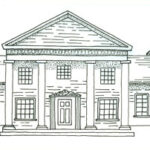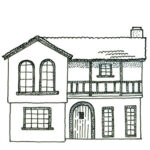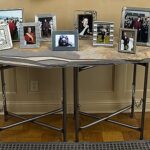Strictly speaking, Colonial homes include those built from the time America was settled until the early 1800s. The clapboard New England farmhouse, homes in Colonial Williamsburg, and staunchly upright row houses around the village square are all examples of the type.
Today, any two-story or story-and-a-half home with dormers, “wood” siding, and double-hung windows may be called a “Colonial.” How can you emphasize its historic roots?
• Walls and ceilings. The original walls were often made of horizontal boards or plaster. More-elegant homes had raised-panel wainscoting topped with chair rail in formal living areas such as entries, living rooms, and dining rooms.
Door and window frames, as well as crown moldings, ranged from plain to substantial, and several pieces of molding with different profiles were often combined. The moldings were usually painted to contrast with the walls.
Common wisdom has it that Colonial colors were fairly muted-gray-blue, ochre, sage green, buff, cream, and barn red-because paints of the time were made from ground minerals. Research has shown, however, that there were also more-vibrant hues, including royal blue, bright yellow, and raspberry. Many paint companies offer historical color palettes.
• Floors. Avoid wall-to-wall carpeting. Instead, install (or renew) stained-hardwood flooring with wide planks and use area rugs. Hooked rugs, rag rugs, needlepoint rugs, and other types with a handmade look are most appropriate.
• Surfaces. Choose natural materials whenever possible. Kitchen countertops, for instance, could be honed marble or soapstone, granite, or maple chopping block.
• Furniture. Sturdy, practical furniture coexists with the graceful lines of Queen Anne, Chippendale, Hepplewhite, Sheraton, and Regency styles. Upholstered chairs and sofas usually show their legs.
• Fabrics. Concentrate on cotton, linen, and wool fabrics. Printed chintzes, plaids, trailing floral patterns, and checks of various sizes lend interest.
• Accessories. Look for pewter, porcelain, pottery, and tin accessories. Keep lighting unobtrusive, except for overhead fixtures. Colonial fixtures held candles, and multi-branch chandeliers and mirrored sconces that amplified the light were often used.
• Details. Stencil a stylized Colonial design near the ceiling to create a border. Install wrought-iron hooks on the wall, and use them to hang hand-dipped wax tapers or dried herbs and flowers.



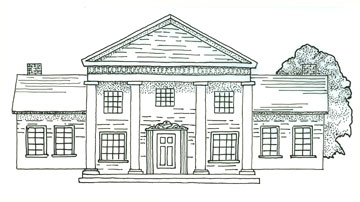



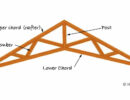
 Don Vandervort writes or edits every article at HomeTips. Don has:
Don Vandervort writes or edits every article at HomeTips. Don has:
